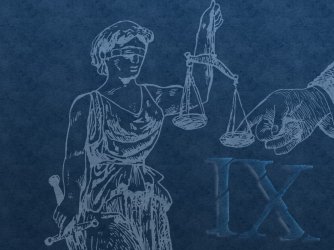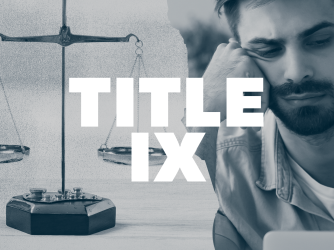Table of Contents
Walter Olson on 'Sentence First, Verdict Afterward' in Campus Sexual Harassment Cases
In the July/August issue of Commentary, Cato Institute Senior Fellow Walter Olson puts the Departments of Education (ED) and Justice’s (DOJ’s) May 9 Title IX compliance “blueprint” in its historical context and emphasizes several of its alarming repercussions. Olson’s article reviews the regulatory foundations for the “blueprint,” including the April 4, 2011, “Dear Colleague” letter from ED’s Office for Civil Rights (OCR) that required campus disciplinary hearings to use a “preponderance of the evidence” standard of proof for determining wrongdoing in cases of sexual misconduct. A reasonable evidentiary standard is not the only procedural safeguard that has been abandoned—at many colleges, an accused student’s counsel may not examine parties or witnesses, and complainants may appeal cases ruled against them (creating a type of “double jeopardy” against the accused). With this pattern in mind, Olson looks to the new requirements of the blueprint, debunking OCR’s claim that its broad definition of sexual harassment is to be used only for purposes of reporting, not punishment: Colleges will ... have to tighten up disciplinary procedures that the feds view as excessively observant of due process toward those accused of sexual misbehavior. For example—in what one critic called an “Alice in Wonderland” standard of “Sentence first, verdict afterward”—colleges will often need to take action against an accused student or faculty member before an investigation reaches any conclusion as to whether the charges against that person are accurate. Indeed, under the blueprint, colleges may discipline students regardless of whether charges are accurate and regardless of whether the charges—even if they are accurate—concern protected speech. Olson continues, explaining that the purported distinction between reporting speech and punishing speech under OCR’s definition of harassment is negated by other troubling side effects of the blueprint: This is a distinction without a difference. To begin with, the process itself amounts to punishment: Once people realize that a certain type of joke or gossip can get them summoned involuntarily into a grievance process of indefinite length and destination, many will get the message and shut up. Second, in defining such speech as harassment while claiming the intent is merely to record and document but not to suppress it, OCR is departing from the commonly shared meaning of the word harassment as something objectionable that should be stopped. Olson’s article is well worth reading in full and can be found on Commentary’s website (subscription required). Want to know more about the ED/DOJ "blueprint"? Check out FIRE's Frequently Asked Questions here!
Recent Articles
FIRE’s award-winning Newsdesk covers the free speech news you need to stay informed.

FIRE statement on campus violence and arrests

BREAKING: New Title IX regulations undermine campus free speech and due process rights

STATEMENT: Title IX regs mean students less likely to receive justice
